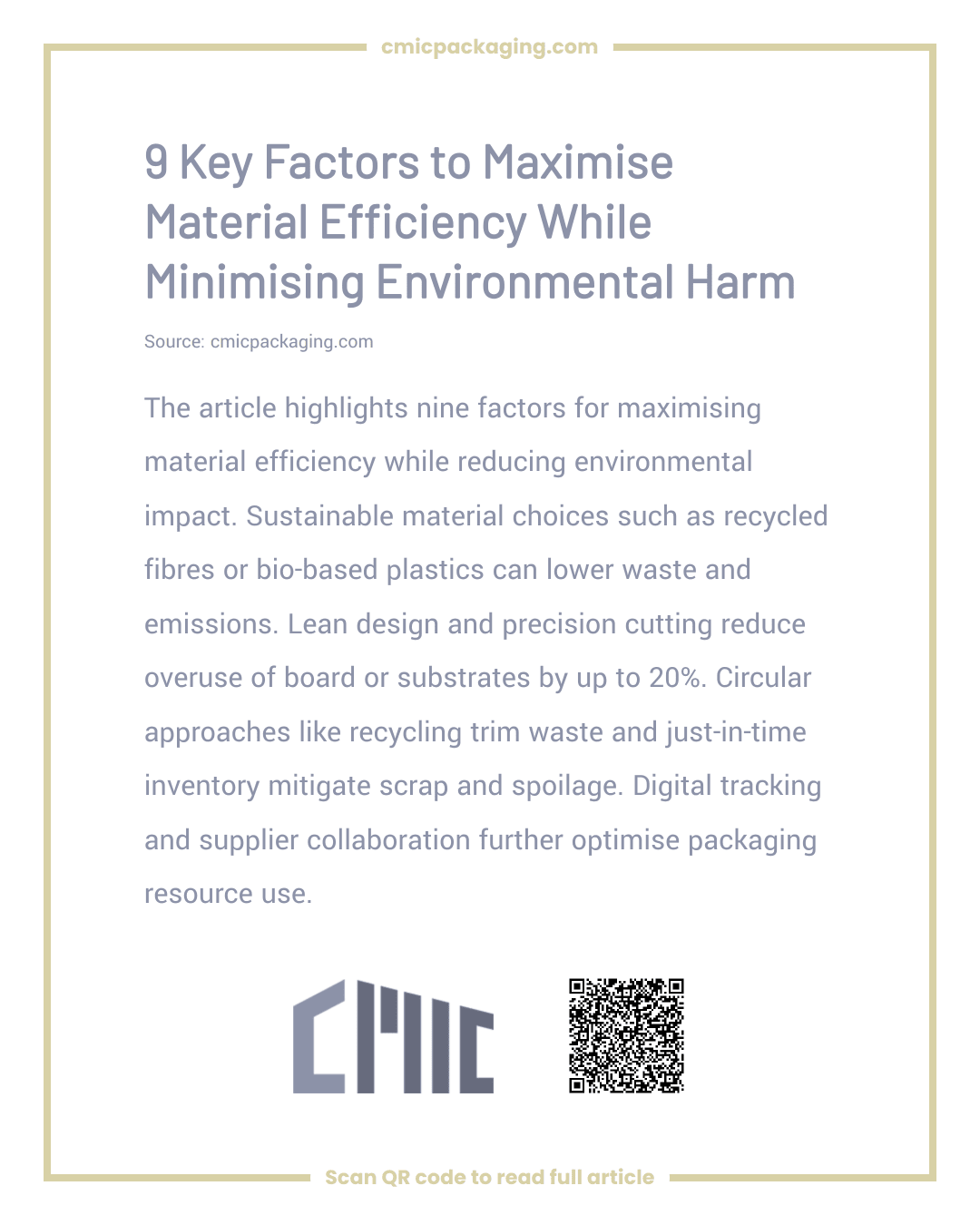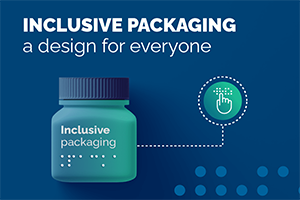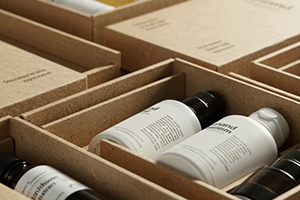Let’s face it: in the wild world of manufacturing and packaging, we’re all trying to do more with less. I’ve been knee-deep in this stuff for years, and trust me, it’s not just about pinching pennies—it’s about staying ahead in a game where “green” is the new black. Regulations are breathing down our necks, customers are picky about their eco-choices, and hey, who doesn’t feel a little better knowing they’re not turning the Earth into a dumpster fire just to make a buck?
The real head-scratcher for folks in B2B? How do you crank up efficiency and sustainability without your products falling apart? After poking around in this arena for ages, I’ve zeroed in on nine solid strategies that can help you nail that perfect balance. Think of them as your toolkit for turning “waste not, want not” into a superpower. Let’s dive in, shall we?
Start with Picking the Right Stuff – Smart Choices Up Front
Right off the bat, it all boils down to what you grab from the shelf. I’ve always said, why settle for planet-punishing materials when you can go for the good guys? Recycled fibers for your packaging boards, bio-based plastics that don’t scream “oil dependency,” or even bamboo – that speedy grower that’s basically Mother Nature’s gift to the resource-strapped.
Picture this in packaging: Ditching virgin plastics for recycled or paper alternatives doesn’t just lighten your trash load; it polishes your brand’s halo, and from what I’ve seen, that wins over clients who actually care about the world. In construction or metal shops, swapping in low-carbon or recycled metals can slash a project’s eco-baggage overnight. I once advised a team that made the switch, and boom – they shaved 15% off costs and nailed their green goals. Not too shabby, right?
Pro tip: Peek at the whole life story of your materials, from cradle to grave, to ensure they’re as eco-friendly and efficient as they sound.
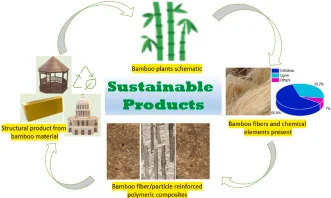
Get Lean with Design – Less Is More, Folks
Ah, design – where so much waste loves to hide. That’s why I’m a big fan of the lean approach: use just enough, and make it count. Imagine engineering a corrugated box that’s feather-light but built like a tank. I’ve watched clients trim up to 20% off their material use this way, and the savings? They add up fast.
In building projects, tossing in some clever voids in concrete slabs means less stuff without skimping on strength – it’s like magic. Or take a garment factory tweaking patterns to wring every last bit from the fabric, leaving scraps in the dust. Overdesigning? It’s a sneaky villain that hits your budget and the environment hard. Trust me, I’ve seen companies crash and burn on that one.
Bottom line: Keep it sleek and savvy – excess is the enemy of awesome.

Tech It Up with Precision Tools – Cut the Waste, Literally
Technology’s been a game-changer here, and it’s downright thrilling. Whether you’re dealing with sheet metal, textiles, mattresses, or paper packaging, gadgets like CNC machines or laser cutters are like having a surgeon’s steady hand, squeezing every ounce of yield from your materials.
Lasers, especially, are my eco-heroes – they’re spot-on accurate, which means way less scrap, energy guzzling, and wasted hours. I helped a mattress plant switch to CNC, and poof: goodbye to mountains of foam and fabric leftovers, hello to top-notch quality. It’s proof that the right tools don’t just save the planet; they sharpen your competitive edge.
Stories like that? They fire me up – tech isn’t optional; it’s your ticket to the big leagues.

Loop It Back In – Reuse and Recycle Like a Boss
Efficiency’s not just about skimping; it’s about keeping things in play. Those offcuts and scraps? Don’t toss ’em – reinvent them! In powder metallurgy, for example, leftover bits get scooped up, spruced up, and reused without skipping a beat. Genius, right?
This whole vibe screams circular economy, and it’s everywhere – from laws to customer wish lists. Waste turns into treasure. In packaging, those printing trimmings can jump right back into fresh batches. I once guided a company that flipped their “waste” into actual cash flow. Mind-blowing shift, and it works wonders.
Remember: In a smart setup, nothing’s truly waste – it’s just plotting its comeback.
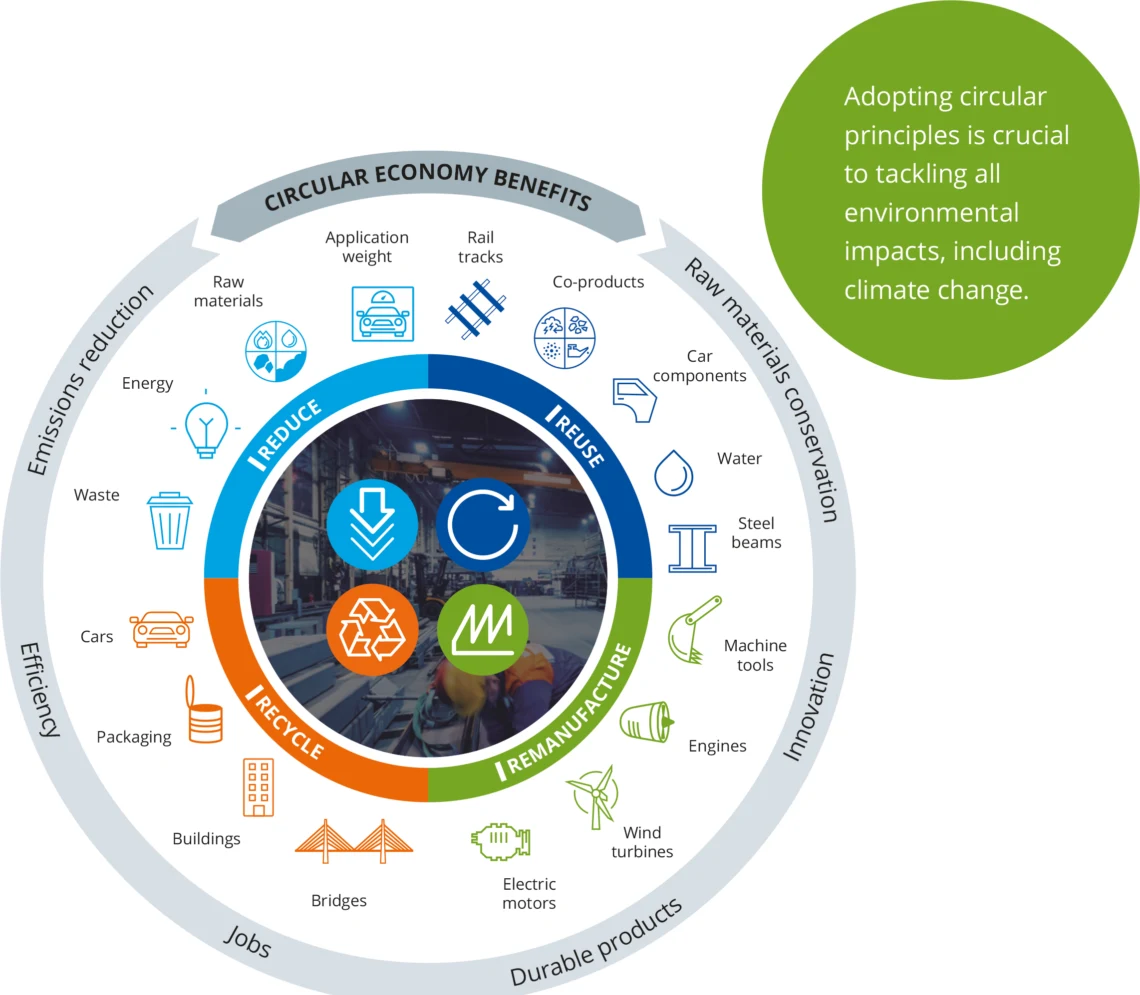
Automate and Time It Just Right – No More Hoarding
Piling up inventory like a squirrel prepping for winter? Bad idea – it leads to spoilage, extra costs, and unnecessary clutter. Enter automation and just-in-time delivery: materials show up exactly when you need ’em, no fuss.
On packaging lines, these systems iron out kinks, slash downtime, and keep things humming. Construction sites stay tidy without forgotten stacks adding to the eco-mess. In my book, this method doesn’t just curb overproduction; it makes your whole operation feel like a well-oiled machine.

Link Materials and Energy – Double the Wins
Materials and energy? They’re like peanut butter and jelly – inseparable. The sweet spot is processes that save on both, blending lean usage with smart, energy-sipping tech.
Take additive manufacturing: It only builds what you need, and pairing it with renewables and recycled powders makes it a green superstar. Servo-electric presses in metalworking do the same, outshining those clunky old hydraulic beasts. I’ve seen it time and again: Cut the fluff, and emissions plummet while profits climb.
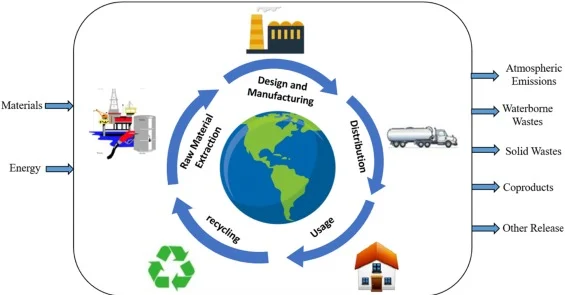
Plan for the Endgame – Easy to Break Down, Easy to Reuse
For stuff that’s meant to last, why not design it with an exit strategy? Make it simple to pull apart and repurpose, and you’re keeping resources spinning instead of six feet under.
Packaging-wise, that could mean clean, recyclable boxes without tricky coatings. In construction, modular bits that snap together and apart, no wrecking ball required. It’s forward-thinking, dodges future headaches from regs, and buyers love it. A firm I worked with went this route and reused parts across jobs – costs dropped, waste vanished. Pretty impressive payoff.
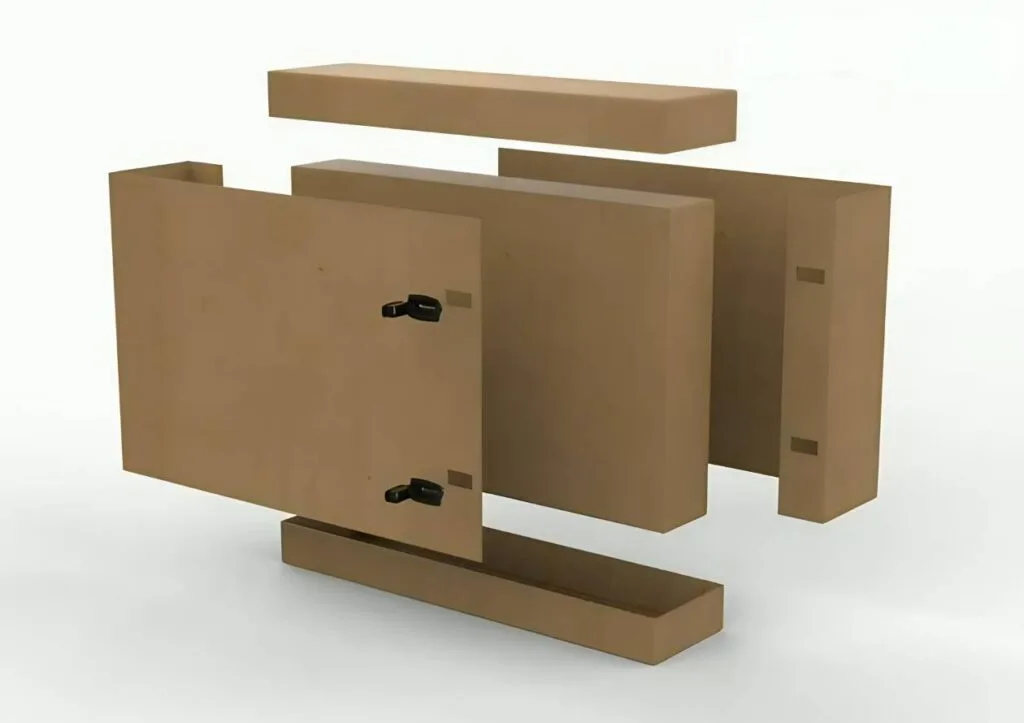
Track It All with Smart Software – Data’s Your Secret Sauce
Data’s the unsung hero in this efficiency quest. Software that monitors every scrap and sheet helps uncover sneaky inefficiencies, like bloated designs or forgotten stockpiles.
For packaging buyers, it might spotlight boxes that are oversized wasters of space and materials. Builders use it to dial in exact amounts of steel or concrete, staying safe without excess. You know what they say: You can’t fix what you don’t measure. I’ve rolled out these tools in projects, and the aha moments? They always reveal goldmines of savings.

Team Up Across the Chain – No Lone Wolves Allowed
Trying to go green in isolation? Good luck with that. The real magic happens when you link arms with suppliers, designers, shippers, and recyclers.
Open chats mean packaging that fits just right, cutting voids and waste in transit. Hooking up with recyclers scores you quality second-hand materials, easing the pressure on fresh resources. The best in the biz? They’re collaborators at heart. I was in an alliance that slashed waste by 25% just by talking more – proof that teamwork makes the dream work.
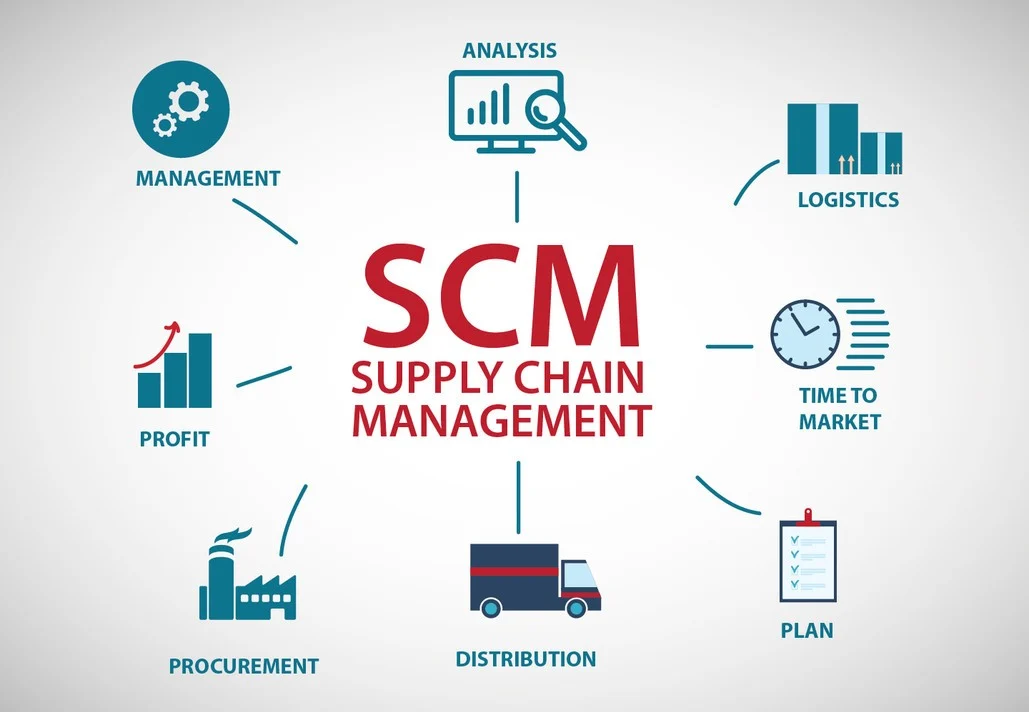
Wrapping It Up: Make Efficiency Your Superpower
Look, boosting material smarts while going easy on the environment isn’t some checklist chore – it’s your edge in a world that’s all about green grit. It trims fat, toughens you up, and sets you up for whatever eco-curveballs come next.
From razor-sharp cuts and endless recycling loops to digital wizardry and supply chain high-fives, these ideas are flipping industries on their heads. Over at C MIC Packaging, we eat, sleep, and breathe this stuff, whipping up custom fixes that are efficient, earth-friendly, and rock-solid. By embracing it all, we’ve made sustainability our secret sauce – and I’m convinced it’s the future.
If you’re juggling a project that needs that efficiency-sustainability vibe, why wait? Rethink how you source, use, and recycle – your bottom line and the planet will high-five you for it.
